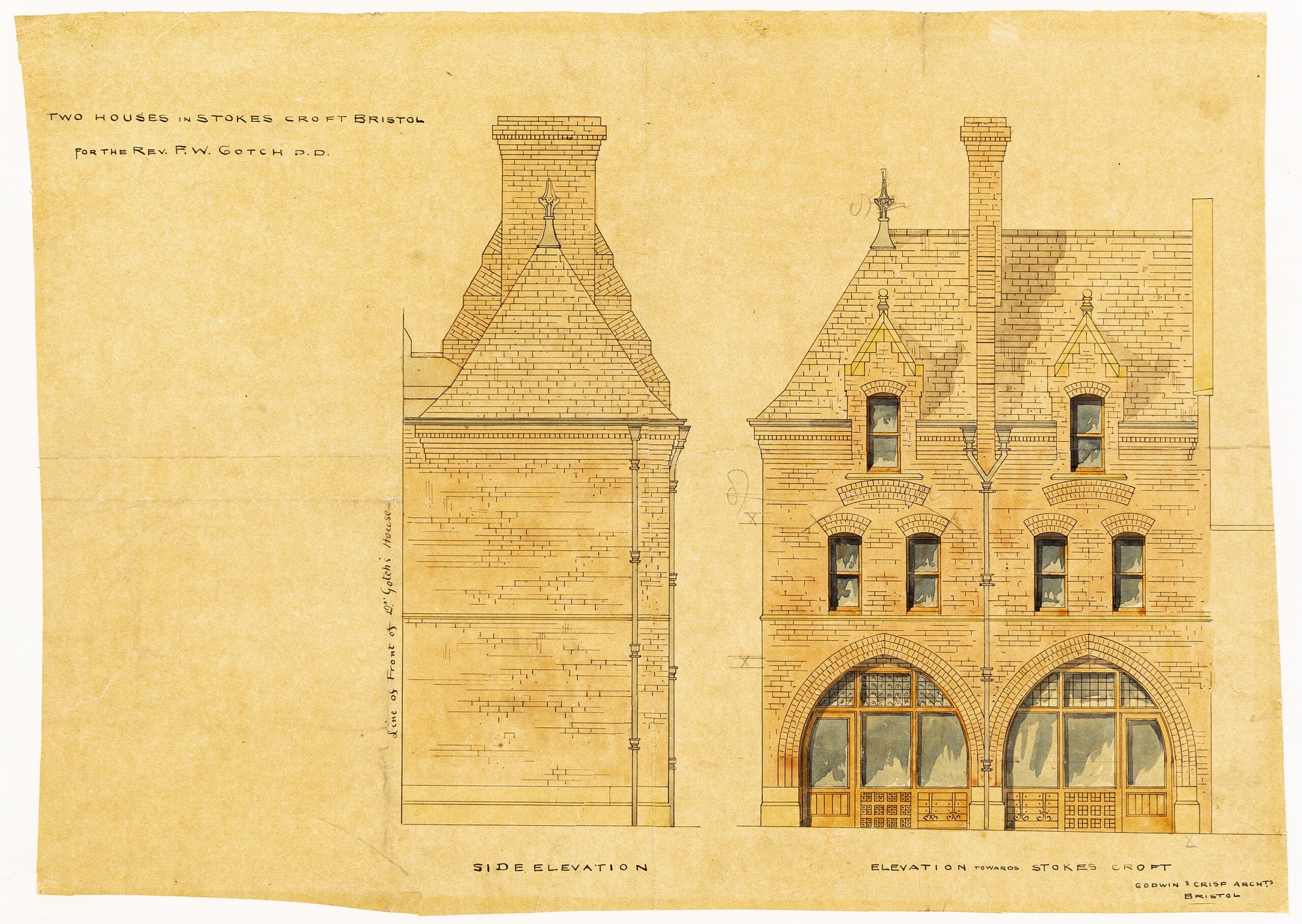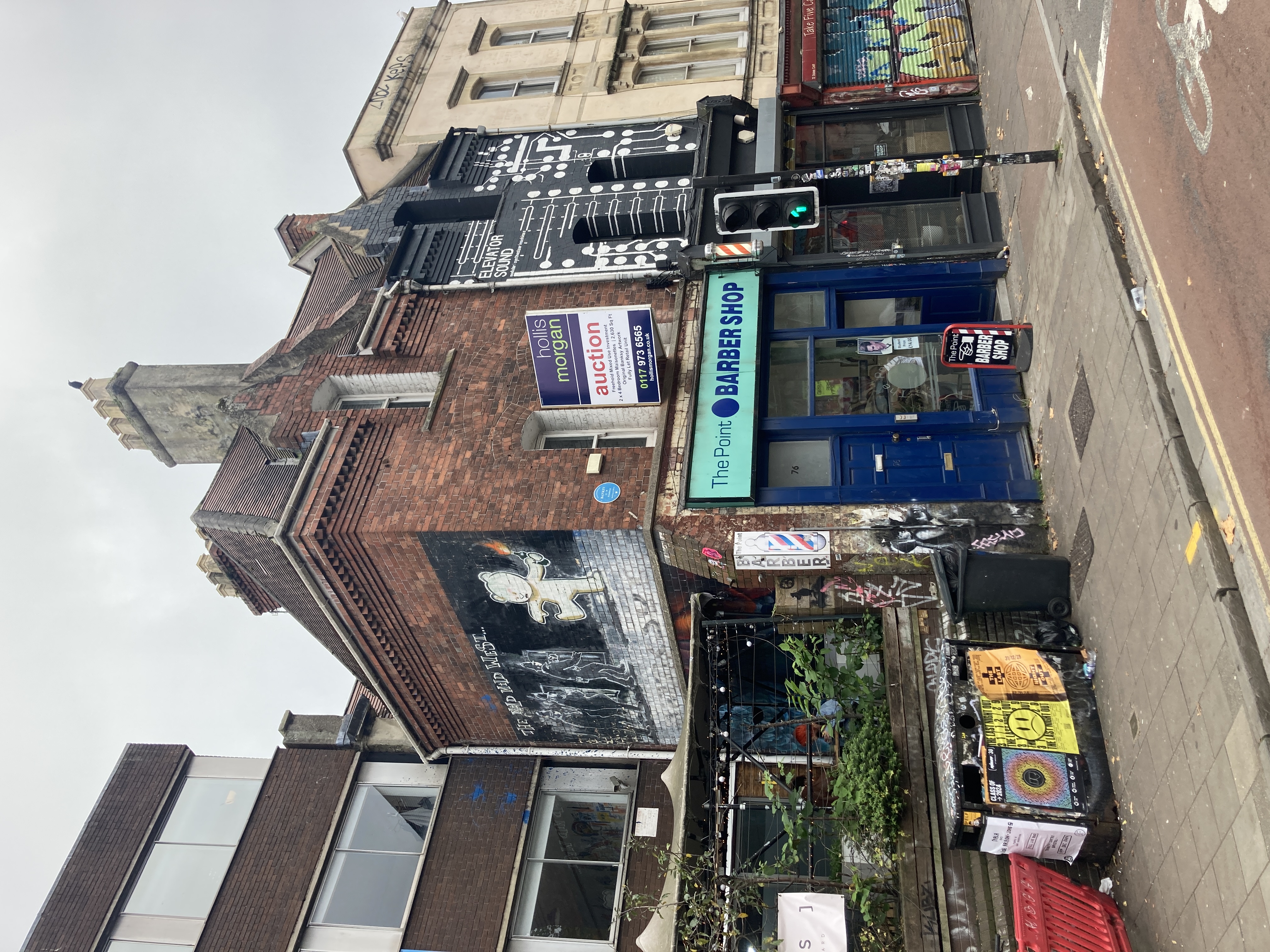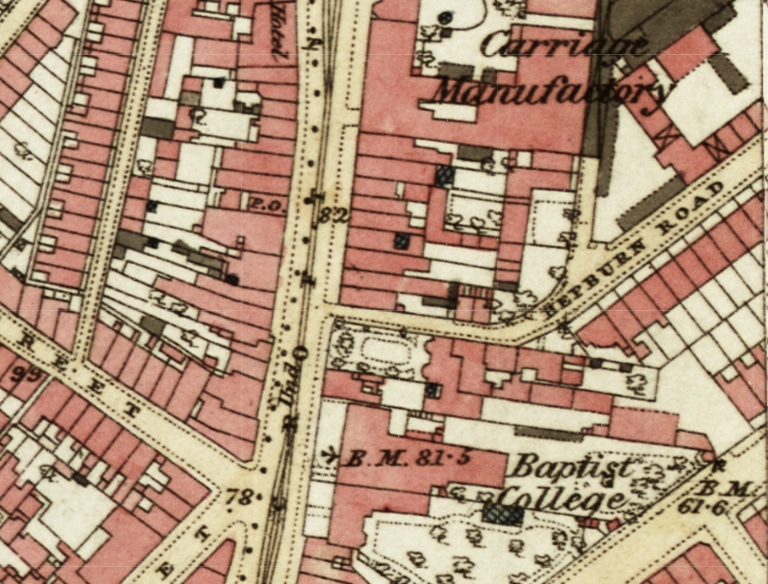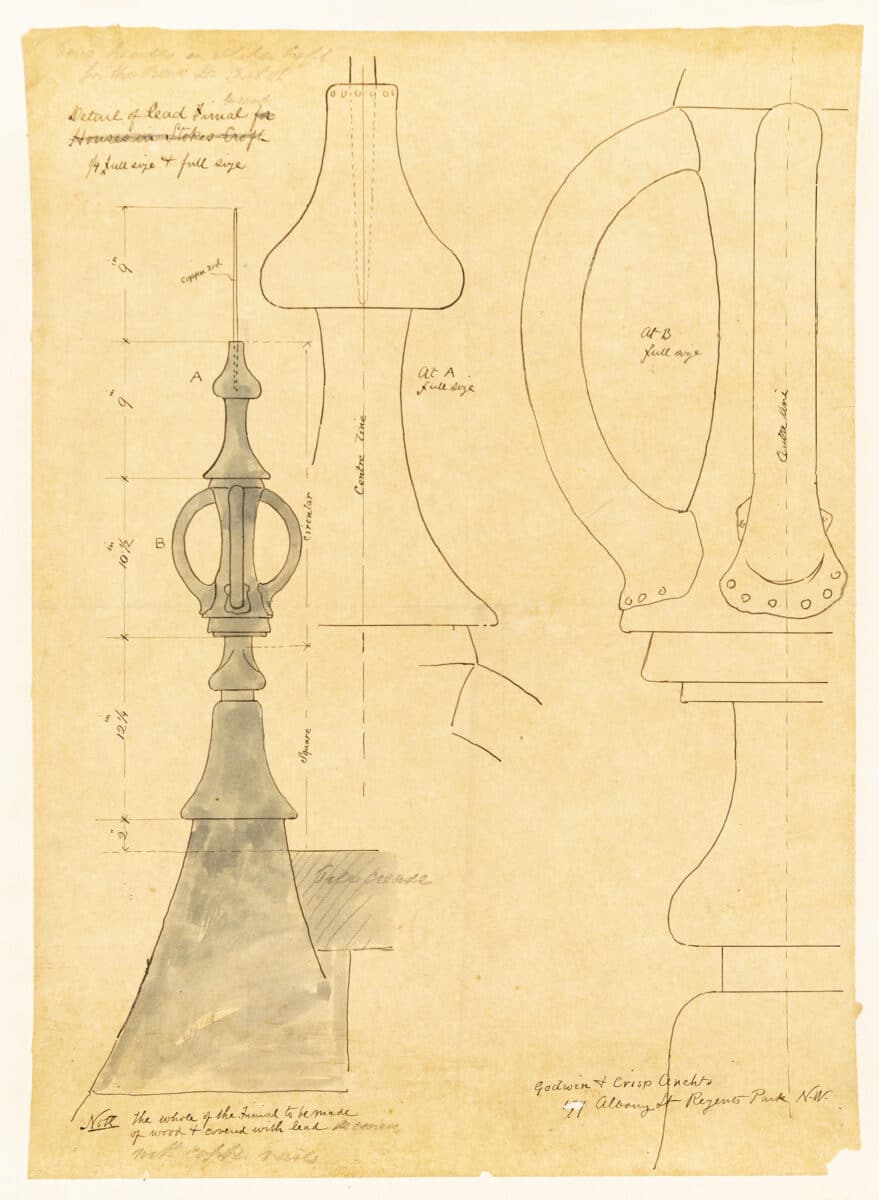E. W. Godwin and the Mild Mild West
From this drawing it would seem unlikely that the side elevation at its centre would one day be photographed thousands of times and attract the interest of people from all over the world. It appears unremarkable, especially when compared to the gutsy brick detailing and gothic flourishes of the building’s principal facade. The drawing suggests that the blank wall is merely a consequence of the front of the proposed building meeting the street while its neighbour, ‘Gotch’s House’, is stepped back.[1]

Yet it is this consequence that has made the building famous—not the building’s design or architects, E. W. Godwin and Henry Crisp, the former of whom was described by Oscar Wilde as the ‘one of the most true artistic spirits’ of the nineteenth century.[2] By setting the building forward from its neighbour, Godwin and Crisp gave a young street artist the canvas on which he would paint a mural of a teddy bear throwing a molotov cocktail at riot police, 130 years later.



Godwin and Crisp were in partnership from 1864 until 1871; Godwin drew and designed the projects while Crisp oversaw their construction. In 1865, after his wife’s death, Godwin moved to London where he continued to design the office’s projects—another of the drawings for this project (above) was drawn in London. See more drawings for the project on Drawing Matter Collections.
Notes
- The Reverend Frederic Gotch was the President of the Bristol Baptist College and the client for the project. His residence connected to no. 76 on one side and the college on the other.
- Oscar Wilde, ‘The Truth of Masks’ (1886), quoted in Dudley Harbron, The Conscious Stone: the life of Edward William Godwin (London, Latimer House: 1949), 1. Godwin was well-known in his time for his architecture, interior and furniture design, writing, and even theatrical productions. He was a central figure in the Aesthetic Movement and a friend of artists such as James Whistler, for whom he designed a house in Tite Street, Chelsea.
